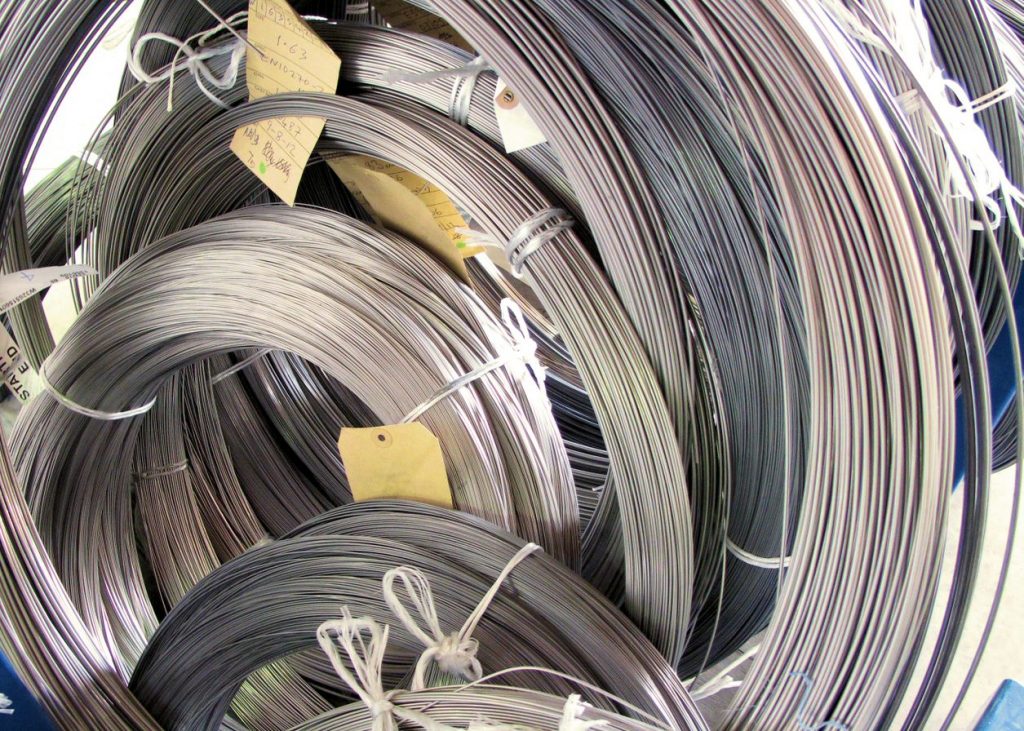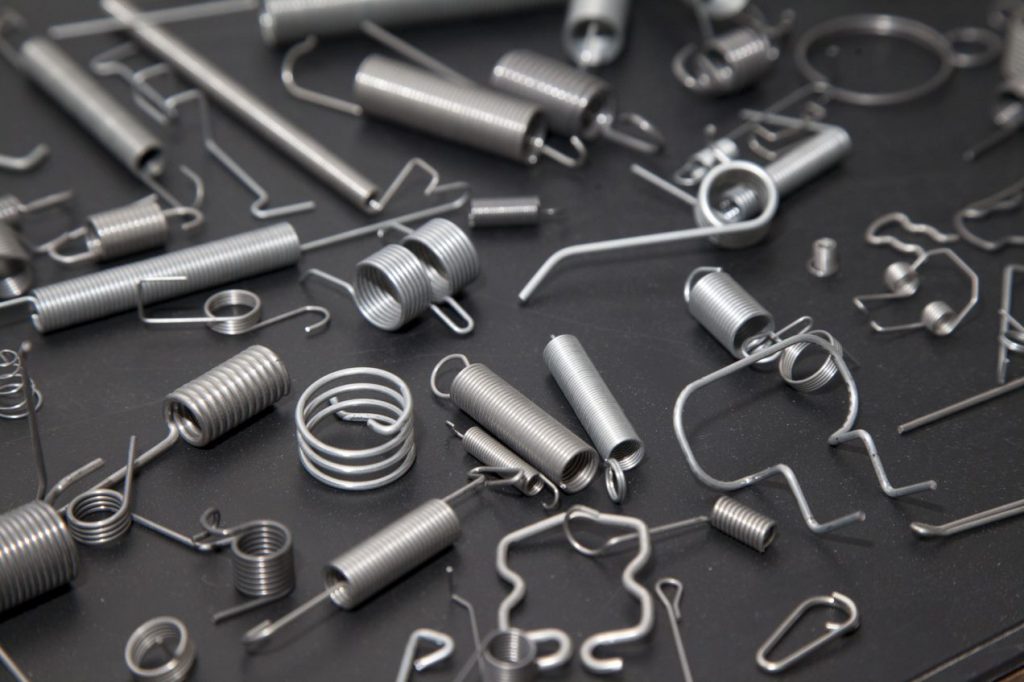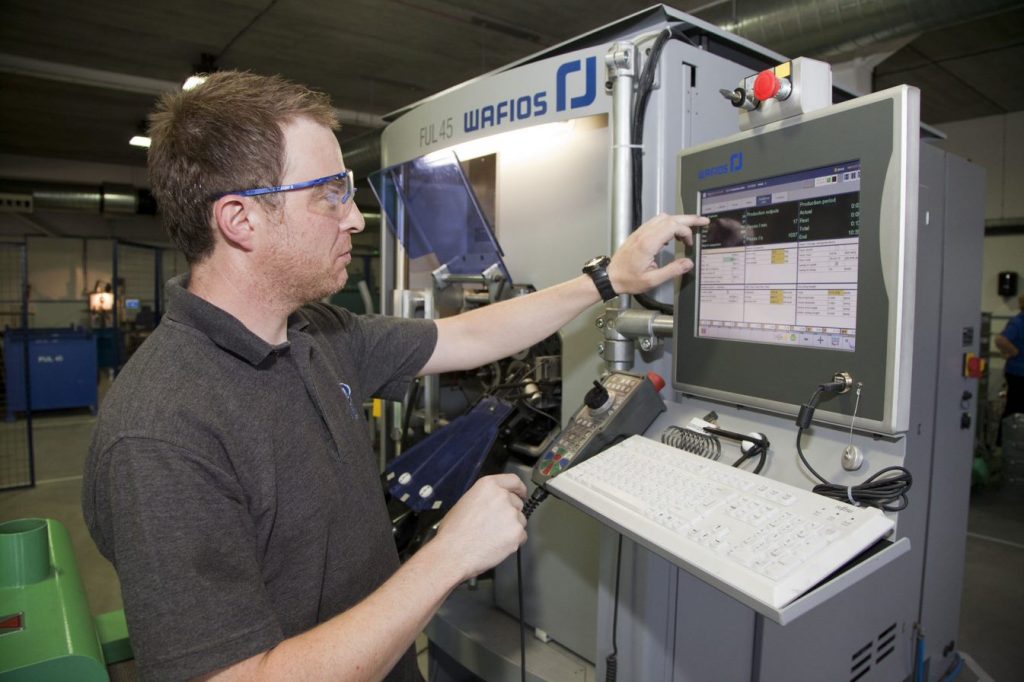We’ve already written about the importance of choosing the right materials for springs, but now we’re focusing specifically on the electronics sector. Not all materials are right for electronics – for example, strength, conductivity, resistance to heat and resistance to corrosion are crucial in the sector – so this needs to be taken into account.

We’re compression springs manufacturers and have been producing springs and wire forms for this industry for many years now, meaning we understand exactly what our clients are looking for and what the best materials for their projects are.
What to Consider When Choosing the Right Materials?
Not any metal or alloy will do when it comes to using springs and wire forms in electronics. It’s vital that these materials possess the right properties; otherwise, not only would the springs not perform as they should, but they could also pose a safety risk or have a short life expectancy.
Fixing these issues could become cost-intensive, especially if the springs end up damaging the item itself as well. So, as spring manufacturers, what do we look for when we create springs for the electronics sector?
Conductivity
This is a key property in electronics, as it refers to a metal’s ability to conduct electric energy. It is determined by how easy or difficult it is for electrons to move under the influence of an electric field. Most metals conduct electricity in one form or another, but only certain materials are adequate for us as conductive springs and wire forms in the sector. This includes silver, copper and gold.
If the material is heated, electrons absorb more energy and move faster as they pass through the metal – this can lead to a higher degree of electrical resistance. This means that conductivity increases with falling temperatures and decreases when temperatures are high.
Heat Resistance
This feature refers to a metal’s or alloy’s ability to resist high temperatures. Whether a spring or wire form will be part of a computer or sensor, it’s crucial that they’re capable of withstanding heat and can, therefore, perform optimally even as temperatures increase inside a machine or electrical board, for example.
A spring that is heat resistant is also more durable, easier to weld, more flexible, resistant to wear and, overall, has an increased lifespan when compared to springs created from other metals or alloys.
Strength
Considering springs will always have a force applied to them and need to be able to store and release energy as needed, it’s important that they’re also strong. This makes them more suitable for high-stress applications and increases their durability as well. In essence, the strength of a material relates to its ability to endure force and pressure without breaking or yielding. This is also called tensile strength.

Resistance to Corrosion
In the electronics sector, it’s crucial that springs and wire forms can withstand a certain level of corrosion. This is because metals can corrode when in electrical contact with other materials (ion exchange) if there’s an electrolyte present. So, this property refers to how easy it is for materials to react with their environment and whether or not they’re hardwearing.
Corrosion resistance makes springs ideal for other industries as well, including the food and medical ones.
Which Spring Materials are Used in Electronics?
Taking this into account, what are the best materials for the electronics sector? Come of the most common conductive spring materials used in this industry include carbon spring steel and copper alloys, which we also use here at Airedale Springs.
Copper alloys suit high tech applications perfectly, seeing as copper has the highest degree of conductivity of any non-precious metal; for instance, brass is often used as spring wire in several electrical applications. Additionally, copper is highly ductile, easy to solder onto surfaces (such as a motherboard) and has good resistance to corrosion.
It’s worth mentioning, however, that this metal is not the strongest. This means that it won’t be the right choice for applications that require strength or resistance to wear and tear. But, considering there are over four hundred copper alloys – each with distinctive properties – you can rest assured that your product will always receive the right material.
As for carbon spring steel, this material is considerably stronger than copper alloys, so it’s often chosen for high-stress environments or in applications that require a fair amount of strength and durability.
However, carbon spring steel does not make for a very conductive spring. Considering this is one of the most important properties of springs and wire forms in the electronics sector, manufacturers such as Airedale Springs offer additional treatments that add conductivity.
A way to achieve this is by plating or coating the spring in tin, silver or gold, depending on your budget or degree of conductivity needed. Tin is the most cost-effective of the three, but it’s also the lowest in terms of the level of conductivity. At Airedale Springs, we can add corrosion protection as well, which includes a pre-galvanized coating.

We understand just how important it is for springs within electrical items to be made from the right metal or alloy, which is why we offer only the highest quality materials at our facility. We also use metal that is one hundred per cent recyclable for all our springs, wire forms and pressings for your additional peace of mind.
Contact us today to learn more about what we can do for you, send us any enquiries to sales@airedalesprings.co.uk or call us on 01535 643456.


